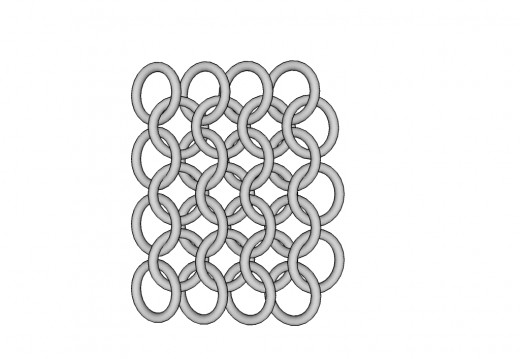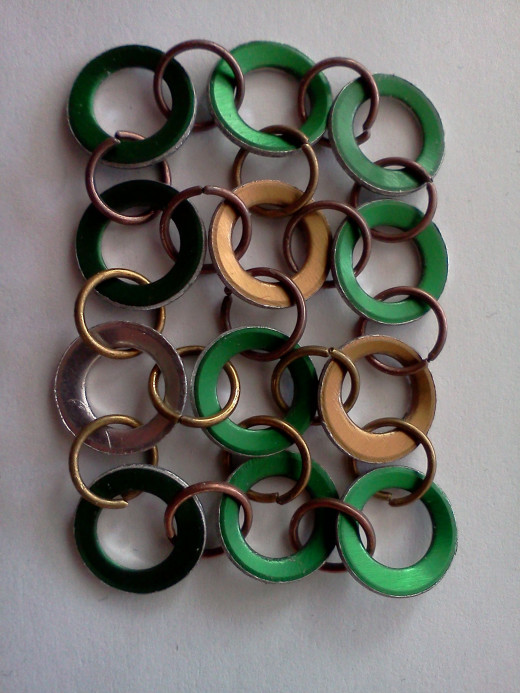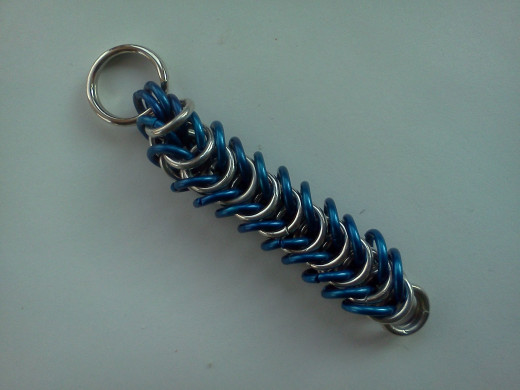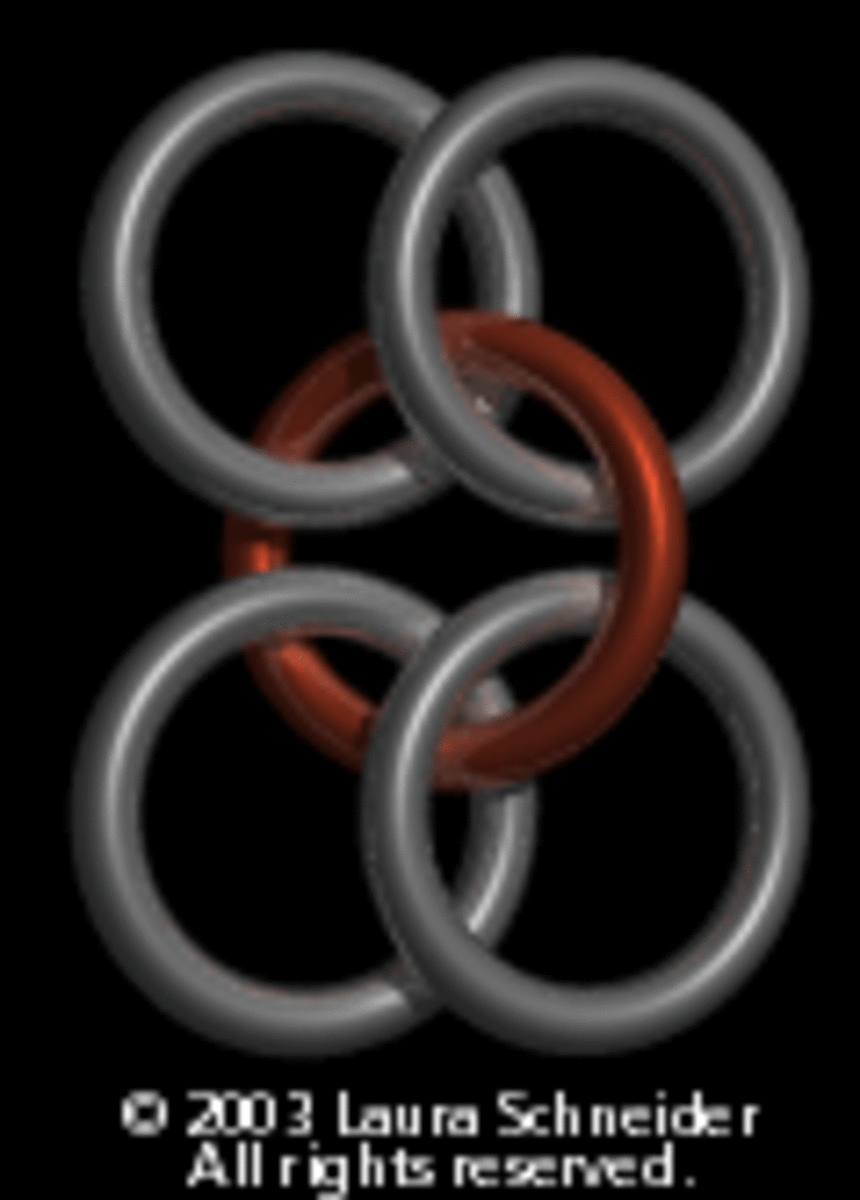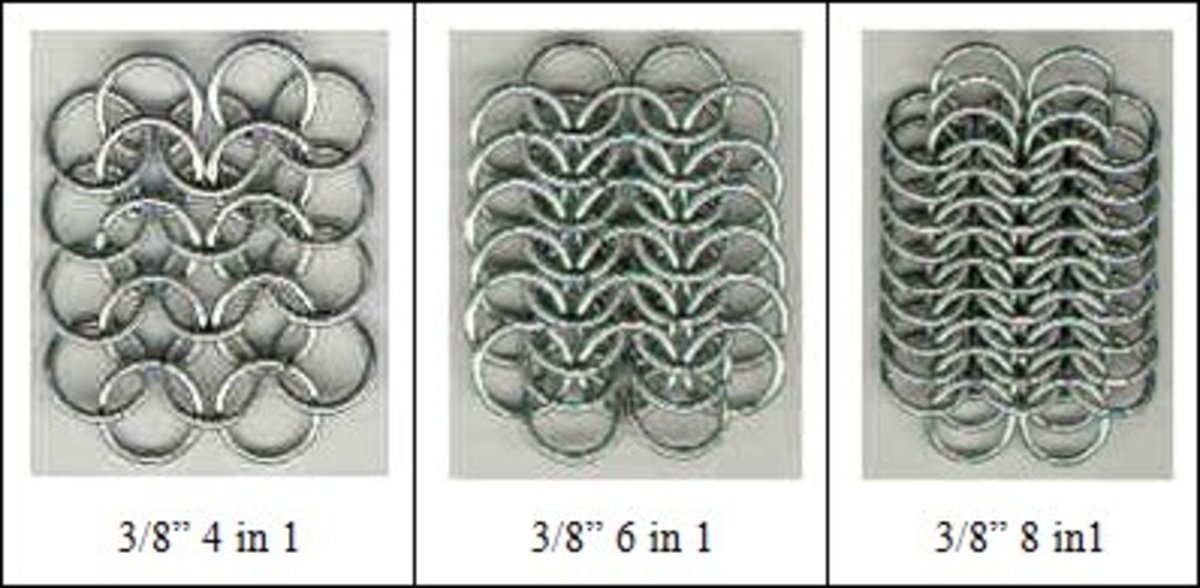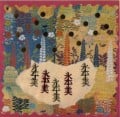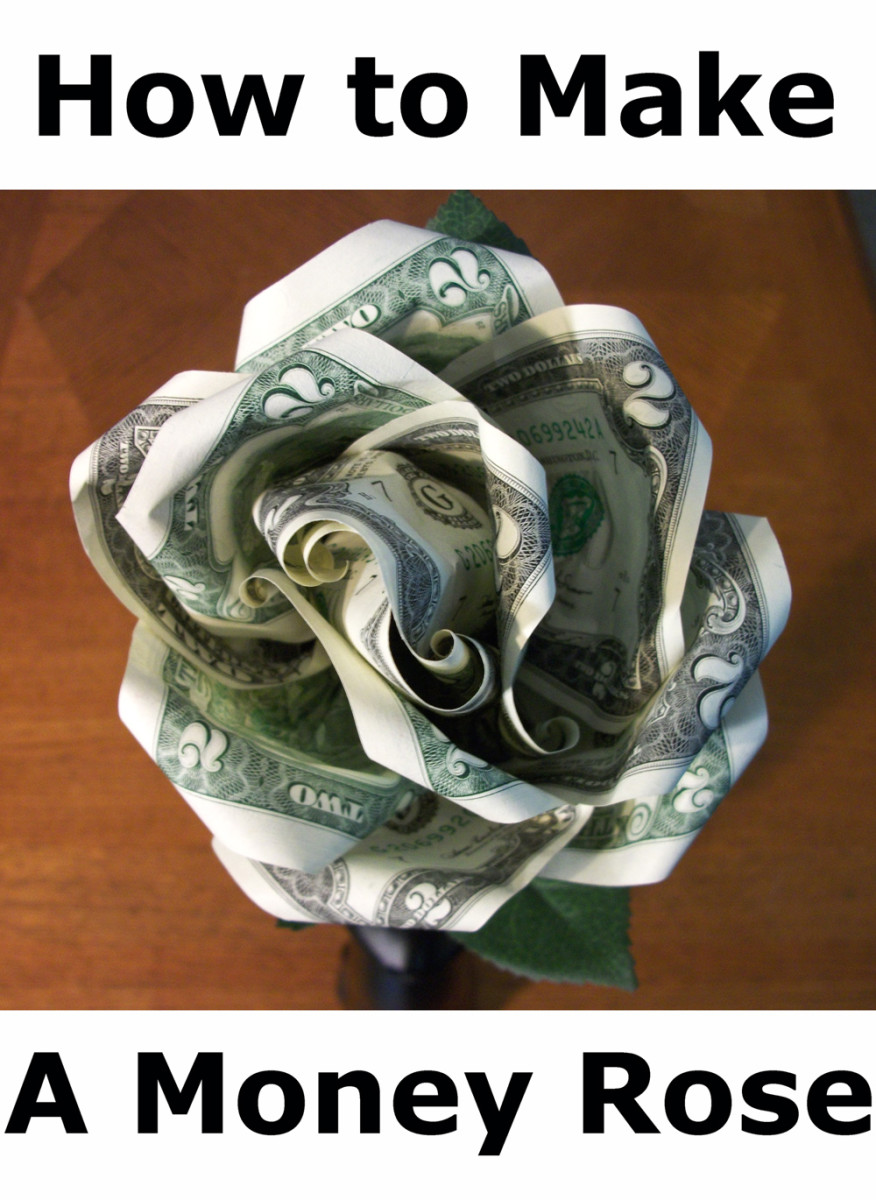How to Make Chain Maille
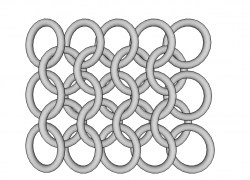
You Can Learn to Make Chain Maille
Chain Maille, chain mail, chainmail ... it's all the same thing. And it's easy to make beautiful jewelry or historic armor with nothing but a bag of metal rings and two pairs of pliers.
In this article, I'll cover the basics of chain mail: what it is, what tools and materials you need, and how to get started.
Unless otherwise credited, all illustrations are my own work, from my Introduction to Chain Mail book.
Maille? Mail? Huh?
Originally, chain mail was just called mail. Over time, the word chain was added to distinguish it from other types of mail (ring mail, scale mail). When artisans started using chain mail techniques to make jewelry, they used the more elegant, French spelling, "maille".
There is no difference in looks between maille and mail. I use both terms in this article.

What is Maille?
Chain mail, or maille, is nothing more than metal rings linked together. Rings are opened, linked together, and closed. That's all.
The art of chain mail is learning the different ways rings can be linked. Be altering the linking pattern, you can make everything from simple chains to complex sheets of mail. Even more effects can be made if you use rings in different sizes.
Some sheet weaves can be shaped to form clothing or decorative objects.
A Chain Maille Gallery - The following images are from my book, Introduction to Chain Mail. These are all considred beginner patterns. More images to come!
Click thumbnail to view full-size



Tools for Making Chainmail - All you need is pliers, but the right ones work best.
One of the advantages of chain mail as a hobby is that you can go a long way with very few tools. All you really need are two pairs of pliers.
Chain mail pliers have flat noses and return springs. The flat nose lets you grip the ring securely, and the return spring lets the pliers open themselves after you loosen your grip.
For some jobs, bent nose pliers can be useful, as they let you get a hold on the ring at different angles.
Inexpensive pliers can be found at chain craft stores, but these will fall apart after a few thousand rings. Chainmail supply stores sell a wide range of pliers, as does Amazon.
If you plan to make armor, you might want a pair of strong pliers with ridges on the inside of the jaws. These will scratch your rings, but will let you get a strong grip on the heavy steel rings used for functional armor.
Remember to order 2!
Materials
Chain Mail Rings of Metal and Other Materials
Most chain maille is made with metal rings. These rings are made of wire, wrapped around a rod and cut off. The rings are opened with your pliers, linked together, and closed tightly.
Rings are made of many different metals, and a few plastics. New mterials are made into rings often. Below I list some of the most common materials.
Aluminum This is the best material for beginners. Aluminum is inexpensive, easy to open/close, and looks good. You can buy plain aluminum, bright aluminum (which is shinier) and adnoized aluminum, which comes in bright colors.
Steel People making functional armor often use mild steel or galvanized steel rings. These don't look pretty, but are very inexpensive and very strong.
Stainless Steel Stainless is very strong, and is pretty enough to make rugged jewelry. It takes muscle to open and close the rings!
Brass and Bronze These metals are nice enough for jewelry, but tough enough to be used as accent metal on armor. Brass is gold-colored, bronze is copper colored.
Niobium, Silver, Gold These metals are used for expensive jewelry.
Chainmaille Rings
Rings can be purchased at your local jewelry supply or bead store, though they are very expensive there. Online suppliers have better prices and more variety.
The ring types and sizes shown below are commonly used.
Do You Want to Make Chain Mail? - I wrote a book ...
If this article has gotten your interest, you can buy my book, Introduction to Chain Mail, for instructions on how to create 8 different patterns. Unlike most chain mail books that focus on jewelry applications, my book also covers the skills and techniques needed to shape sheet weaves, so you can make clothing and armor.

